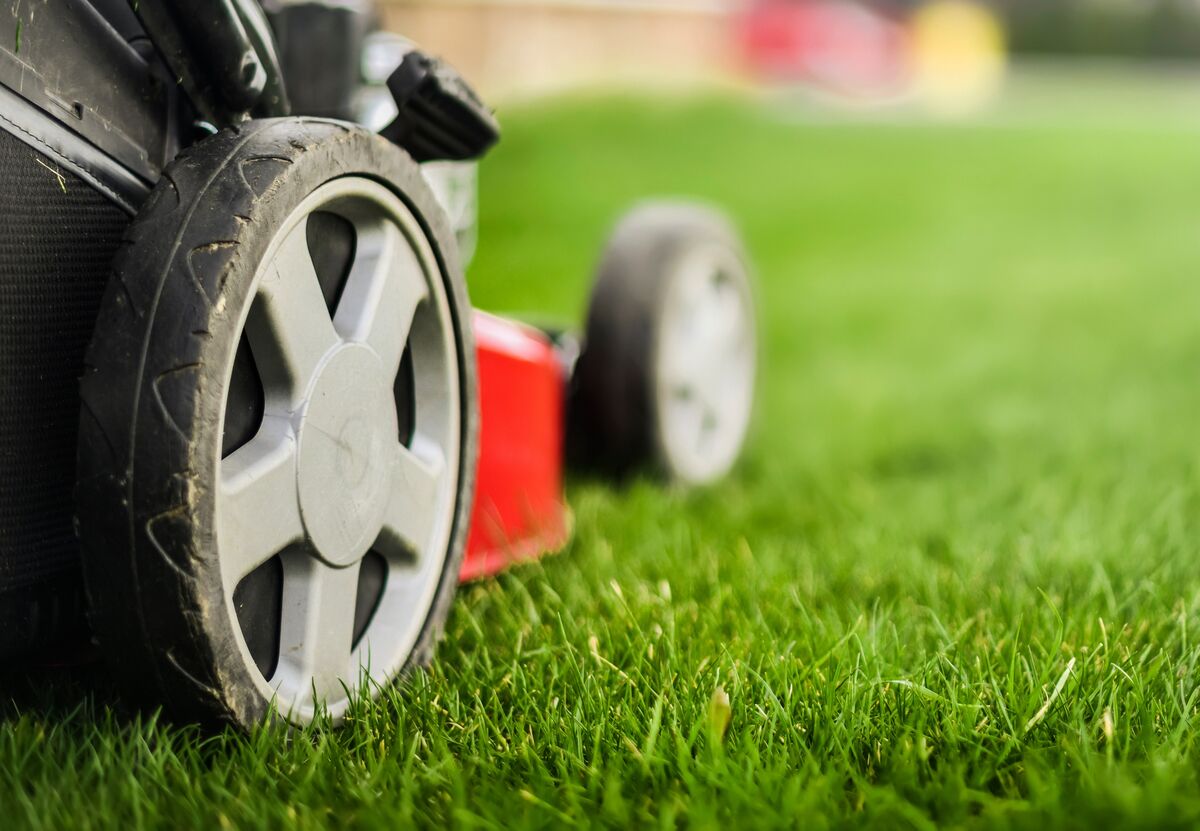
Mowing is a simple yet impactful lawn care chore. For a healthy lawn, trim only one-third of your grass’s total height at a time. This principle is known as the one-third rule.
Repeatedly cutting your grass too short has serious drawbacks and can leave your lawn vulnerable to disease, pests, and weeds. But by cutting only one-third of the blade, you not only avoid harming your grass, but you also promote deep roots and avoid unnecessary stress, promoting your lawn’s health and vitality.
Understanding the One-Third Rule
The one-third rule of mowing is that you should mow no more than one-third of your grass’s total height in a single mowing session. It is important to follow this rule if you want to mow your lawn the right way.
For example, if you have a lawn that is 3 inches high, never mow more than 1 inch off the top of your grass.
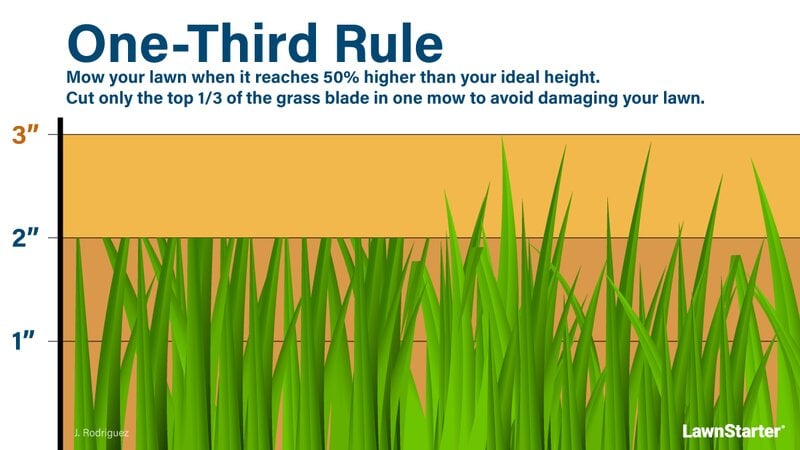
To approach this from a different angle, knowing the ideal height of your lawn will help you determine which height indicates that it’s time for you to mow. For example, if you prefer to keep your lawn trimmed at a height of 3 inches, mow when it reaches 4.5 inches. Or save yourself the trouble and hire a lawn care professional to keep tabs on the mowing height instead.
Pro Tip: Keep your lawn mower blades sharp. Dulled lawn mower blades tear grass instead of cutting it, leaving behind rough, jagged cuts that stress your grass. It is recommended that homeowners have their mower blades sharpened once or twice a year.
See Related:
Why the One-Third Rule Matters
You want your yard to be the envy of the neighborhood, and an outstanding yard begins with healthy grass. The one-third rule improves the health of your grass by helping it develop a stronger root system, make food for itself (photosynthesize), and withstand stresses like heat and drought, giving your grass a chance to thrive.
| Stronger root system | Mowing one-third of the blade minimizes stress and prevents lawn scalping. Grass that is cut too short overstresses the grass and may damage the crown, inhibiting the plant’s ability to grow deep roots. |
| Less thatch | Although grass clippings themselves don’t cause thatch, when the lawn already has too much thatch, leaving clippings on your lawn will contribute to an increase in the thatch layer. |
| Good for photosynthesis | When you cut only one-third of the grass, you leave behind enough of the blade for your grass to continue to photosynthesize and create food. |
| Grass can better fight diseases and pests | Following the one-third rule takes mowing off the list of potential stressors, keeping your grass healthy, vigorously growing, and more resistant to invading pests or common lawn diseases. |
| Grass can better fight weeds | A robust stand of grass prevents weeds naturally, minimizing sunlight at the soil level and out-competing weeds for space and nutrients. |
| Grass can handle heat stress and drought | Taller grass shades the soil below, which helps retain soil moisture and reduce heat at the soil level, protecting your lawn during drought. |
How to Apply the One-Third Rule
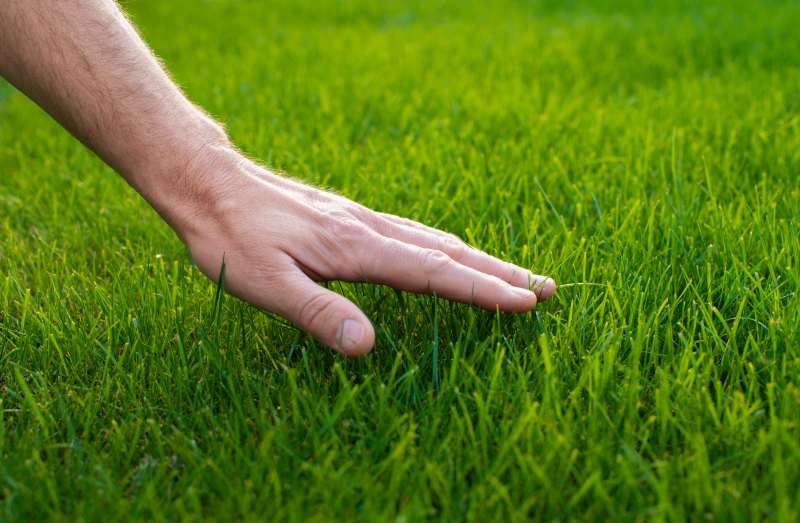
Determining the ideal height for your grass and knowing how to tell when your grass has grown to its mowing height are important factors that you need to know to implement the one-third mowing rule.
What Length Should I Mow My Grass?
How low to cut your grass depends on your grass type. Once you have identified the type of grass you have in your lawn, reference the chart below to find the optimal growing height based on your turfgrass type.
| Type of grass | Average height | When to Mow |
| Bermudagrass | 1 to 2 inches | 1.5 to 3 inches |
| Zoysiagrass | 1 to 2 inches | 1.5 to 3 inches |
| Centipedegrass | 1 to 2 inches | 1.5 to 3 inches |
| Perennial ryegrass | 2 to 4 inches | 3 to 6 inches |
| Kentucky bluegrass | 2 to 3 inches | 3 to 4.5 inches |
| St. Augustinegrass | 2 to 3 inches | 3 to 4.5 inches |
| Tall fescue | 2.5 to 4 inches | 3.75 to 6 inches |
Pro Tip: Some homeowners might prefer taller turfgrass, especially if you have pets who like to romp around outdoors.
See Related: How to Mow Tall Grass in Your Lawn
1. Calculate the Ideal Cutting Height
Grass Cutting Height Calculator
Mow your grass when it reaches: 0 inches
To calculate your ideal cutting height without the aid of the chart above, follow this simple equation: Divide your ideal height by two, then multiply the result (quotient) by three. Once the grass reaches that height, it’s time to mow.
In equation form, it looks like this:
([ideal mowing height] ÷ 2) x 3 = Height when you should mow your grass
For example, if your ideal grass height is 3 inches, then you would solve the equation like this:
(3 ÷ 2) = 1.5
(1.5) x 3 = 4.5
4.5 inches = Height when you should mow your grass
2. Measure your Grass Height
To measure the height of your grass, grab a ruler or tape measure. Rest the end of your measuring tool on the soil to determine the height of the grass.
3. Adjust Your Mower
Before you start mowing your lawn, check that your lawn mower is set at the right height. It should be set at a height that will trim only a third off your lawn.
To adjust the height, most push lawn mowers have levers located on the wheels. For a riding lawn mower, there is usually a lever near the side by the seat that you can use to adjust the height.
Season-Specific Guidelines to Consider
While you are planning out how often you need to mow, consider how quickly your grass grows each season. As the weather changes, so does your turfgrass’s growth rate.
Below are some of the seasonal lawn maintenance requirements you should be aware of:
Spring Mowing
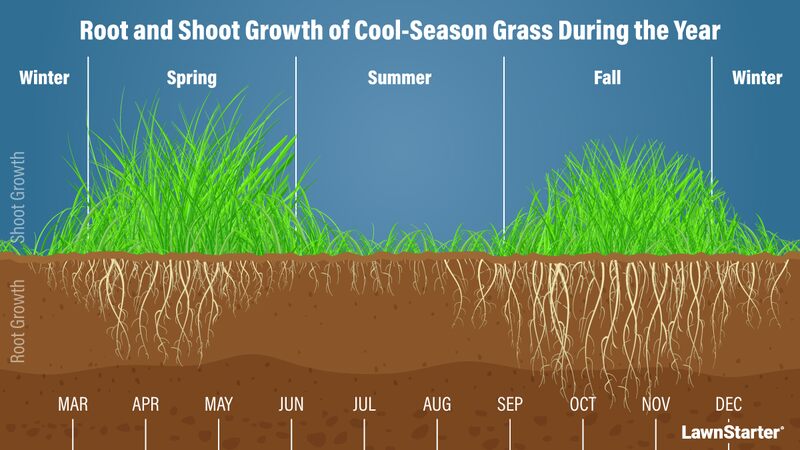
Spring is when the mowing season begins, although when your lawn begins to grow will depend on whether you have cool-season or warm-season turfgrass.
- Cool-season grasses grow the most in the spring and fall seasons, so cool-season turfgrasses require frequent mowing during the springtime. Cool-season grasses grow best in temperatures that range from 60 to 75 degrees Fahrenheit.
- Warm-season grasses grow best in temperatures from 75 to 90 degrees Fahrenheit, so these start growing a little later in the spring.
In general, expect to mow your lawn once a week, but adjust your mowing schedule depending on the growth rate of your grass.
See Related: When to Mow Your Yard This Spring
Summer Mowing
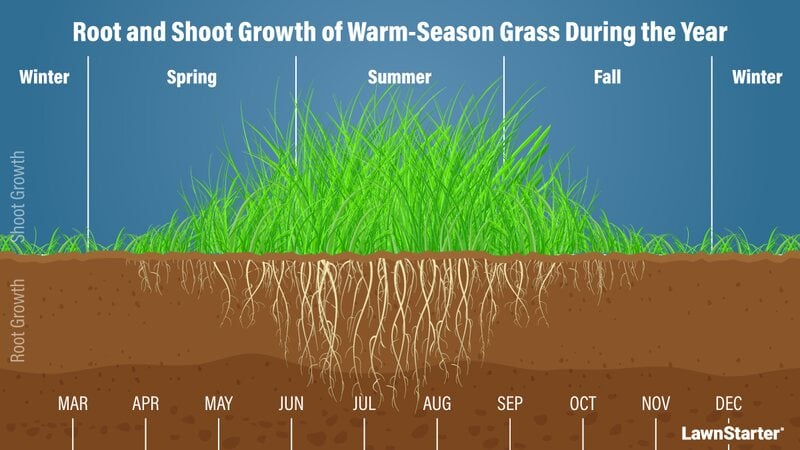
During the summer, set your lawn mower to a higher cutting height, about 1/2 inch taller than during the rest of the year. This helps retain soil moisture, prevent weeds, and grow deeper roots to withstand the summer stress period.
The frequency of summer mowing depends on the temperatures in your area as well as the amount of rainfall you receive. The rate of grass growth determines how often you need to mow, so adjust mowing frequency accordingly.
- Cool-season grasses don’t grow much during the summer, so cut cool-season grasses every 7 to 10 days. When they don’t get enough water, cool-season grasses go dormant in extreme summer heat. Don’t mow your lawn if your cool-season grass goes dormant.
- Warm-season grasses grow the most during the summertime, so they will need to be mowed once or twice a week. As the grass grows, increase the cutting frequency to keep up with the growth of your lawn if needed.
When your grass is stressed from drought or heat, be extra cautious with mowing your lawn. Heat-stressed grass isn’t as resilient and will have trouble recovering if you scalp your lawn. Monitor the rate of your grass growth as well as drought stress that may be affecting your yard.
See Related: Summer Lawn Care Guide
Fall Mowing
In the fall, adjust your mowing height to a lower setting. Here are the guidelines you should follow for your turfgrass during the fall:
- Cool-season grasses grow quickly in the fall, so they need to be mowed more frequently during the autumn season.
- As the growing season for warm-season grasses draws to a close, expect to reduce mowing frequency to once a week or as needed.
It is debated if homeowners should trim their lawn shorter for the last mow of the season. Some say to mow low while others make a case that homeowners should mow the lawn at its normal height. Sticking to the one-third rule for the final mow of the season allows your lawn to maintain its area of photosynthesis and keeps sunlight from reaching weeds.
See Related: When to Stop Mowing the Lawn Before Winter
FAQ About the One-Third Rule for Mowing Grass
Yes, with proper care, your grass can recover after it has been mowed too short. However, repeatedly scalping your grass reduces its ability to photosynthesize, generates a lot of debris on your lawn, and can eventually kill your turfgrass.
Even when your grass is overgrown, you should still follow the one-third rule. You will have to mow your yard several times until the grass is trimmed back to its ideal height. Gradually decrease the height each time you mow until you reach the lawn’s ideal mowing height.
Even when your lawn is too high, you should always allow your grass a little time to recover, at least three days. That way you don’t put too much strain on your grass.
• Cool-season grasses can be mowed every 5 to 6 days during the spring and fall. In the summer, mow them every 7-10 days.
• Warm-season grasses should be mowed once or twice a week during the growing season.
Mow the Right Way
Before you start mowing, check that your lawn mower is set at the desired height. If you hire a lawn care company to mow your lawn for you, they’ll follow the one-third rule and mow to the right height for your grass type.
Don’t have the time for or interest in lawn care chores? To get the lawn you want without the sweaty hassle of mowing the yard yourself, hire a lawn care company near you to trim your yard the right way.
Sources:
- Penn State Extension: The Cool-Season Turfgrasses: Basic Structures, Growth and Development
- University of California: Cutting Off One-Third of the Grass Blade
- University of California: Lawn Diseases: Prevention and Management
- University of Georgia: Thatch is the Enemy of Home Lawns
Main Image Credit: Milan / Adobe Stock Free / License